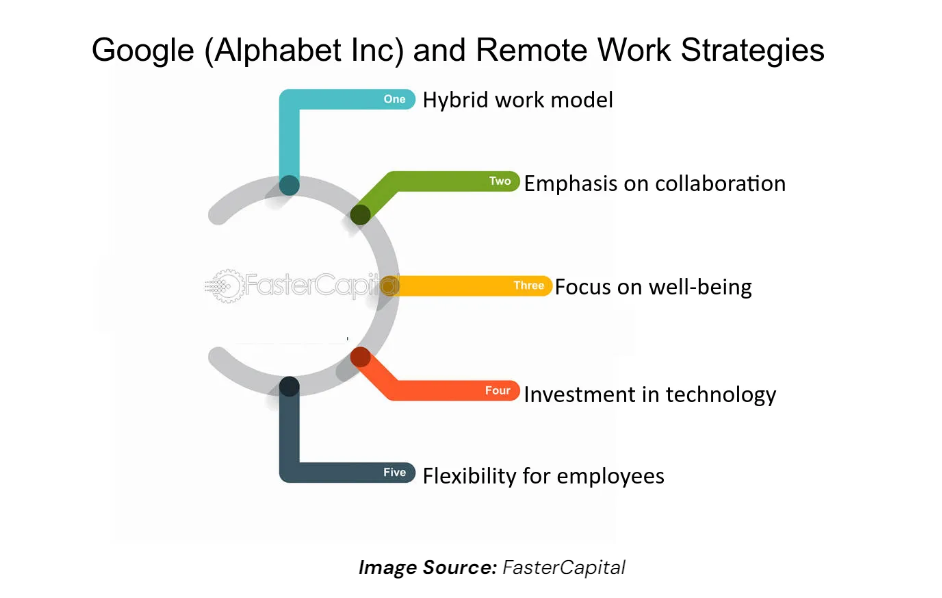The Guide to Setting Up Your Remote Workspace for Maximum Efficiency
After the COVID-19, remote work is becoming the new normal. It offers businesses the flexibility to access a global talent pool, reduce overhead costs, and boost employee satisfaction. But to truly reap the benefits, businesses need to help their remote teams with efficient workspaces.
Setting up a productive workspace at home isn't always easy. From choosing the right equipment to fostering collaboration from afar, there's a lot to consider.
So, in this blog, we'll provide practical tips to help your business create a remote work environment where everyone can excel.
8 Easy Steps To Create Your Remote Workspace for Maximum Efficiency
Here are the easy steps you can follow to create the best workspace.
Create a Clear Remote Work Policy
When your team is spread out, clear rules are super important. It helps everyone understand what's expected and how to get things done, says David Martinez, VP Enterprise & OEM Accounts at Cybernet Manufacturing. A good policy covers a few key things.
- Who can work remotely: Be clear about which jobs or people can work from home.
- Gear and help: Decide if the company will give people computers and stuff or if they'll need to use their own. Also, let them know how to get tech help if they need it.
- Stay in touch: Set up how people will talk to each other (like email, chat, video calls) and how often they need to be available.
- Check in on work: Explain how you'll make sure everyone's doing a good job, even when they're not in the office.
By covering these things, you're creating a clear path for everyone to follow. It helps people feel confident about working from home and keeps the company running smoothly. Also, don't forget to share the policy with everyone and make sure they understand it. A team that knows the rules is a team that can succeed, no matter where they're working from.
A good example for this is Spotify. They've embraced remote work with their "Work From Anywhere" policy.

It gives employees the flexibility to choose where they work whether it's from home, a co-working space, or even another country.
Equipping Your Remote Workforce
Just like a carpenter needs the right tools, your remote team needs the right equipment to do their best work. Providing the essentials or offering support shows you care and sets them up for success.
Here's what to keep in mind.
- The Basics: Make sure everyone has a good computer, monitor, keyboard, and mouse. If they need other things for their job, figure out how to get them too, adds Martin Seeley, CEO of Mattress Next Day.
- Comfort is Key: Encourage your team to set up their workspace in a way that's comfy and won't hurt their bodies. A good chair and desk can make a big difference.
- Tech That Helps: Think about tools that can make work easier, like headphones for focus or a webcam for video calls. The right tech can boost productivity.
- Software for Teamwork: Choose programs that let people work together easily, even when they're far apart. Things like chat apps, project management tools, and video conferencing software are essential.
Designing for Productivity and Collaboration
Imagine a workspace that sparks creativity and focus, even from a kitchen table or spare bedroom. That's the goal! A well-designed workspace helps your remote team get in the zone and collaborate smoothly.
Here's how to help your team create productive home offices.
- Dedicated Space: Encourage employees to set up a specific area for work, even if it's just a corner of a room. This helps separate work life from home life and minimizes distractions, explains Dan Close, Founder, and CEO at House Buyers.
- The Right Vibe: Share tips for creating a workspace that's both functional and inspiring. Good lighting, comfortable furniture, and a bit of personality can go a long way.
- Organization is Key: Suggest ways to keep both physical and digital spaces tidy. This could include storage solutions, cable management tips, and digital filing systems.
- Collaboration Stations: Even though they're remote, your team still needs to connect. Recommend tools and strategies for virtual collaboration, like shared documents, project management platforms, and regular video meetings.
Take Google, for example. They're known for their innovative and playful office spaces, and they've carried that same spirit into their approach to remote work.

They encourage employees to personalize their home workspaces and offer tips on ergonomics and creating a productive environment.
Technology and Connectivity
A strong and reliable internet connection is like oxygen essential for survival. Without it, productivity grinds to a halt, and frustration mounts. Make sure your team has the tools they need to stay connected and collaborate seamlessly.
- The Need for Speed: High-speed internet is a must for remote work. Encourage your team to assess their needs and choose an internet plan that can handle video calls, file sharing, and all their work tasks.
- Wi-Fi Optimization: A strong Wi-Fi signal throughout their workspace is key. Offer tips on router placement, troubleshooting, and using Wi-Fi extenders if needed, shares Jimi Gecelter, CEO of Tradeit.
- Tech Support on Standby: Have a plan in place for when things go wrong. Provide IT support or recommend reliable local providers to help with connectivity issues.
- Backup Plans: Encourage your team to have a backup plan for internet outages, like a mobile hotspot or a nearby coffee shop with Wi-Fi.
Build a Culture of Communication and Collaboration
Remote work doesn't mean working in isolation. It's crucial to create a virtual environment where your team feels connected, supported, and empowered to collaborate effectively.
- Communication is Key: Establish clear communication channels and expectations. Encourage the use of tools like Slack, Microsoft Teams, or Zoom for instant messaging, video calls, and file sharing.
- Regular Check-ins: Schedule regular team meetings and one-on-one check-ins to keep everyone aligned and informed.
- Virtual Team Building: Don't forget the fun! Organize virtual team-building activities, online games, or even virtual coffee breaks to foster camaraderie and build relationships, adds Sumeer Kaur, Founder of Lashkaraa.com.
- Open-Door Policy: Encourage open communication and create a safe space for employees to share ideas, concerns, and feedback.
Prioritize Employee Well-being
Remote work can blur the lines between work and personal life, making it challenging to maintain a healthy balance. As an employer, it's your responsibility to support your team's well-being and create a work environment that promotes both physical and mental health.
- Work-Life Balance: Encourage employees to set clear boundaries between work and personal time. This might include setting specific work hours, creating a designated workspace, and avoiding work-related tasks outside of those hours.
- Ergonomics & Movement: Remind employees of the importance of proper posture, regular breaks, and stretching throughout the day. Consider offering resources like online ergonomic assessments or virtual fitness classes.
- Mental Health Support: Provide access to mental health resources, such as employee assistance programs (EAPs) or online counseling services. Encourage open communication about mental health and create a supportive environment where employees feel comfortable seeking help, says Alex Taylor, Head of Marketing at CrownTV.
- Flexibility & Breaks: Encourage employees to take regular breaks throughout the day to recharge and avoid burnout. Offer flexible work arrangements whenever possible to accommodate personal needs and commitments.
Measure and Manage Performance
Remote work doesn't mean giving up on accountability. It's essential to establish clear performance expectations, track progress, and provide regular feedback to ensure everyone is contributing and meeting their goals.
- Clear Goals & Expectations: Set clear, measurable goals for each employee and ensure they understand how their work contributes to the company's overall objectives.
- Regular Check-ins: Schedule regular one-on-one meetings to discuss progress, address any challenges, and provide feedback.
- Performance Tracking Tools: Utilize project management tools, time tracking software, or other relevant tools to monitor progress and identify any potential issues.
- Constructive Feedback: Provide regular feedback, both positive and constructive, to help employees grow and develop in their roles.
Adapt to the Future of Work
The world of work is evolving, and remote work is here to stay. To remain competitive, businesses must embrace flexibility, adapt to new technologies, and invest in their remote teams' ongoing development, explains Robbin Schuchmann, Co-Founder of Employ Borderless.
- Flexibility is Key: Be open to exploring different remote work arrangements, such as hybrid models or flexible schedules. This can help attract and retain top talent and accommodate diverse needs and preferences.
- Grab New Tech: Stay informed about the latest tools and technologies that can enhance remote collaboration and productivity. Be willing to experiment and adopt new solutions that can benefit your team.
- Invest in Learning: Provide opportunities for your remote team to develop their skills and knowledge. This could include online courses, workshops, or mentorship programs. Investing in your employees' growth shows your commitment to their success and helps them stay engaged and motivated.
- Continuous Improvement: Regularly evaluate your remote work policies and practices, seeking feedback from your team and making adjustments as needed. The key is to remain agile and adaptable in an ever-changing work landscape.
Wrapping Up
Creating a growing remote work environment requires intentionality and effort. By establishing clear policies, investing in the right tools and technologies, building a culture of communication, etc., you can build a high-performing remote team that achieves great results.
Always keep in mind, remote work is a journey, not a destination. Means, it is all about continuous learning, adaptation, and finding what works best for your business and your team.









